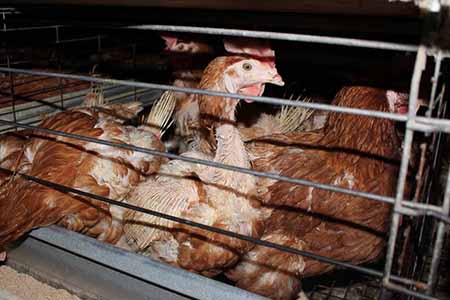Window dresssing changes
Referring to the article in the Advertiser 20/22, pg 21, "Battery cages set to go," by 2036. What a cruel farce, 14 more years for millions of layer hens trapped in torturous cages. Egg producers will then be required to install nest areas in all 'new' chicken cages and provide hens with access to perches, platforms, and scratch areas. As usual, these window dressing changes are legislated on paper, to placate people under the guise of animal welfare. No mention of cage sizes or numbers of birds per cage. In my opinion, I can't see any relief from the misery that exists now.
Phil Cornelius
Millions crammed in cages for eighteen months of their laying life.
When hatched, layer chicks are sexed at one day old. The little roosters are surplus to the egg industry, so are thrown into crushing machines or gassed, to be recycled for pet food or as food for the meat chickens. The females are placed in cramped sheds until they are old enough to become layers
Layer hens suffer greatly during their short lives. Bred specifically over time, with one attribute in mind, the ability to lay many eggs for a short period.
Their average laying life is 18 months. These birds are then considered "spent" hens.
They are tricked into laying twice a day, by lighting in the sheds being switched on at night, thus depleting their bodies of calcium, as so much of the hens' calcium is lost by producing so many egg shells.
Layer hens sheds can house upwards of 50,000 birds per shed.
Jammed into caged 4 or 5 birds per cage, with little more room than an A4 sheet of paper, the only time these hens will see daylight is on the way to slaughter.
At 18 months of age they, too, are grabbed by their legs, crammed into crates and are often transported long distances to slaughter, in all weathers.



